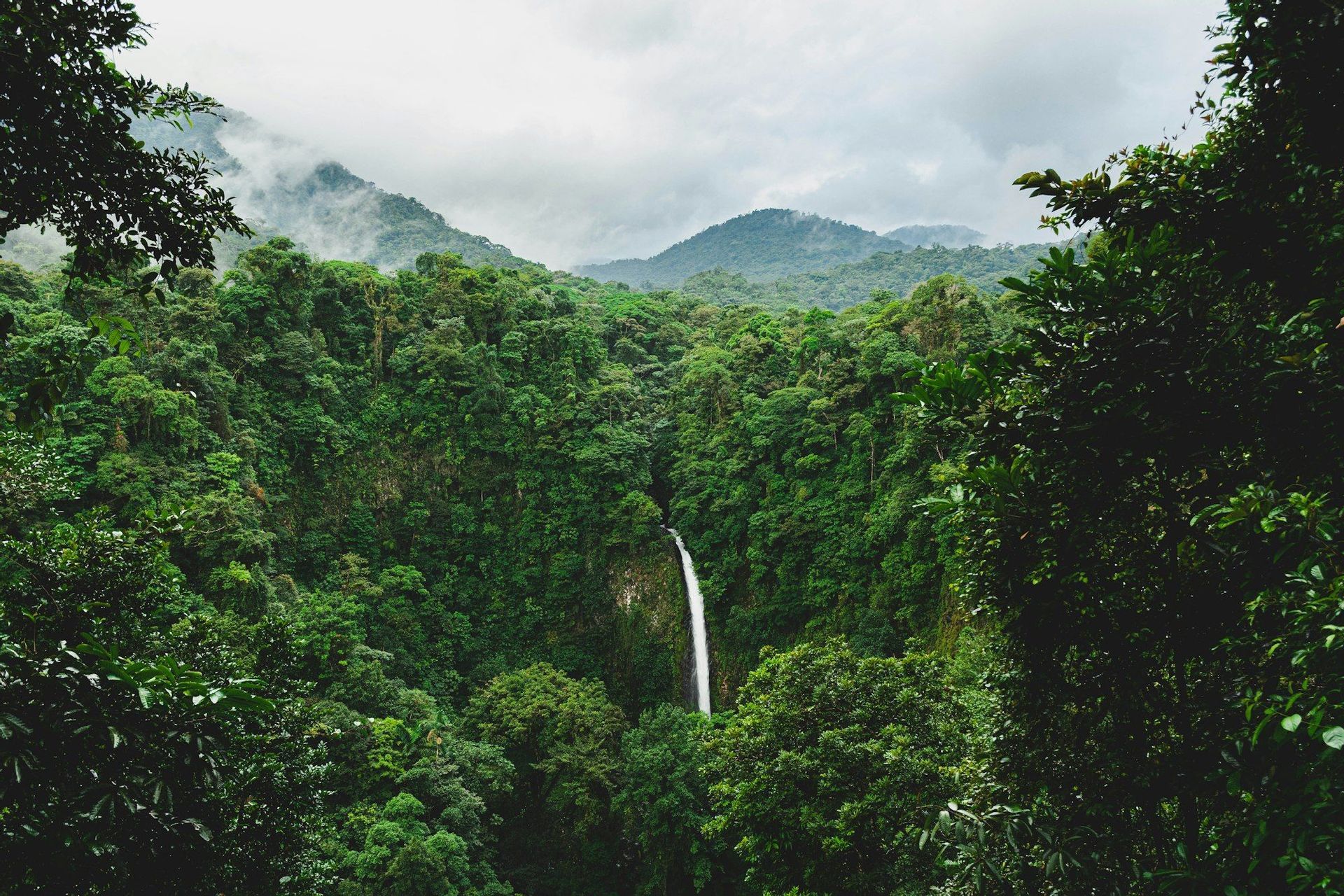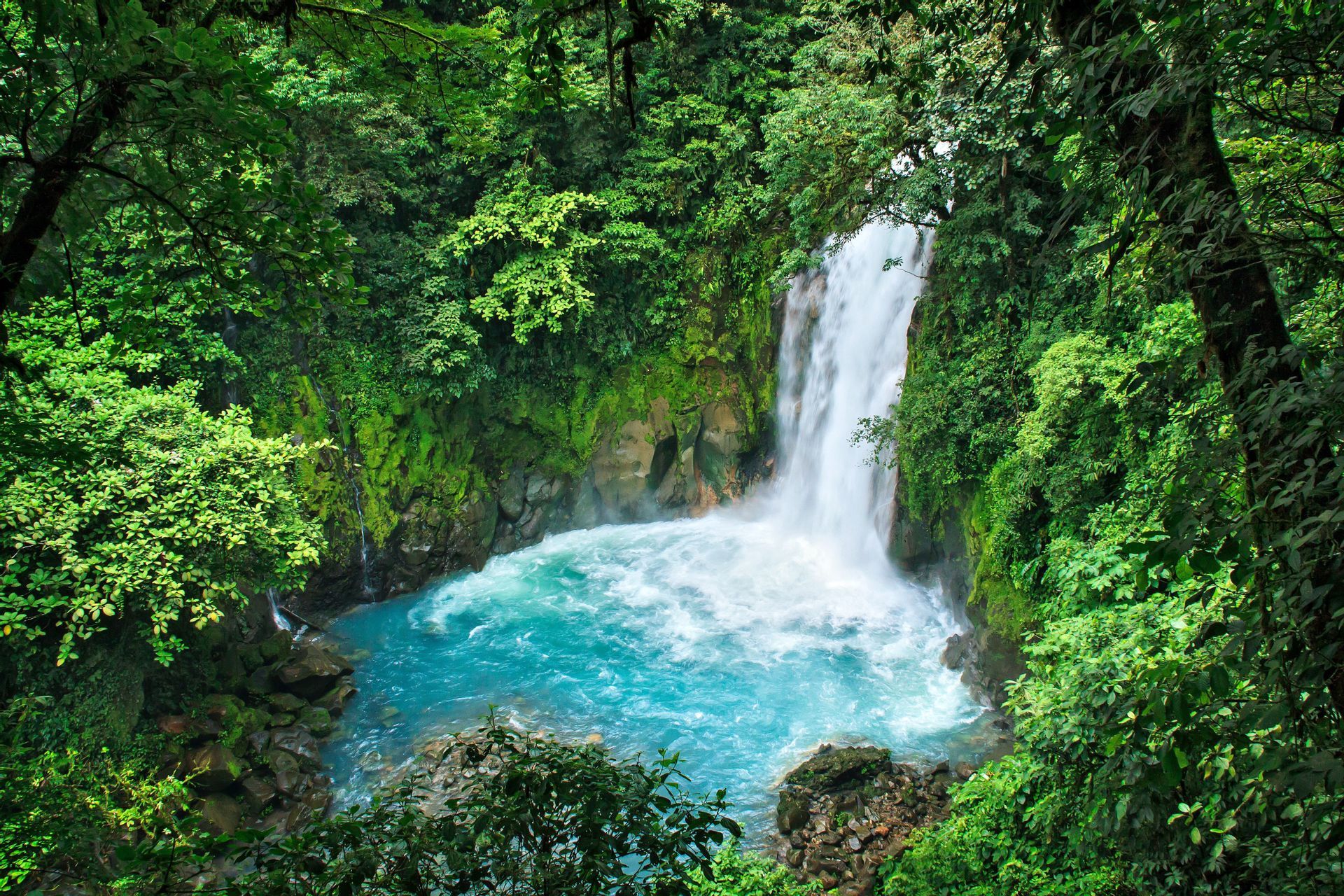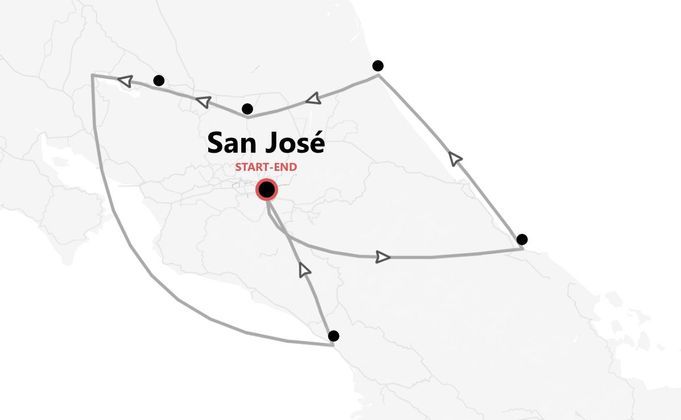
Group trips to Costa Rica
Our organized trips to Costa Rica
Where vibrant life bursts from every leaf, Costa Rica offers an unparalleled immersion into nature's grandeur and a spirit of joyful living. It's a land of lush rainforests and pristine coastlines, of thrilling adventures and peaceful serenity that truly redefines paradise. From the breathtaking biodiversity of Manuel Antonio National Park, where playful monkeys roam freely beside sparkling beaches, to the misty, ethereal trails of Monteverde Cloud Forest, and the majestic presence of Arenal Volcano inviting exploration, Costa Rica welcomes nature enthusiasts and adventurers alike, eager to embrace the "Pura Vida" philosophy and discover the pure magic of its landscapes.
FAQs about Costa Rica
If you are a UK citizen, to find out the entry requirements for Costa Rica, you can check this informational page from our partner Sherpa. If you need a visa, you can apply for it through Sherpa. If you are not a UK citizen, you can still use Sherpa by changing the nationality in the 'Passport' section.
Before traveling, always remember to check the government website of your country of origin for updates on the entry requirements for Costa Rica – you wouldn’t want to stay home due to a bureaucratic detail!
- UK residents: review the FCDO Travel Advice.
- US residents: consult the US Department of State Travel Advice.
- Other residents: refer to your government or local consulate's travel advice.
Costa Rica is in the Central Standard Time zone, GMT -6. Costa Rica does not observe daylight saving time, so the time difference between Costa Rica and the UK varies depending on the year.
The currency in Costa Rica is the Costa Rican Colón. You can exchange your money at banks and currency exchange offices, which are commonly found in cities and tourist areas. Keep an eye out for currency exchange rates as they can vary.
Credit and debit cards are widely accepted in Costa Rica, especially in tourist areas, restaurants, and larger stores. However, it is also a good idea to carry some cash for small purchases or in more rural areas. The local currency is the Costa Rican Colón (CRC), and you can exchange your money at banks or authorized exchange offices. Some places may also accept US dollars, but it's best to have local currency for convenience.
In Costa Rica, tipping is not as common as in some other countries. A 10 percent service charge is usually included in the bill at restaurants, so tipping extra is not obligatory. However, if you receive exceptional service, you can leave a little extra cash to show your appreciation. For taxi drivers, rounding up the fare is a nice gesture, but not necessary. Hotel staff might appreciate a small tip for luggage assistance or housekeeping.
Wi-Fi is available in most tourist spots in Costa Rica. For full coverage, grab a local SIM at the airport or in town, or get an eSIM, just make sure your phone is unlocked.
In Costa Rica, the official language is Spanish. You'll find most locals are friendly and willing to help if you're trying to speak their language. Here are a few useful expressions you might hear or want to use:
- Hello (Hola)
- Thank you (Gracias)
- Please (Por favor)
- How much does it cost? (¿Cuánto cuesta?)
- Where is the bathroom? (¿Dónde está el baño?)
Most people in tourist areas speak some English, so you should be able to get by without too much trouble.
In Costa Rica, you'll need plugs with two flat parallel pins, similar to those used in the United States, known as Type A and Type B. The voltage is 120V, and the frequency is 60Hz. If you're bringing devices from Central Europe, you might need a plug adapter. It's a good idea to check if your devices can handle the voltage to avoid any surprises.
The main religion in Costa Rica is Roman Catholicism. While it's the official religion and deeply rooted in the culture, the country is also known for its religious tolerance. You'll find a variety of other religious communities, including Protestant groups. Keep in mind that religious events and holidays like Semana Santa (Holy Week) are widely celebrated, and you might experience some closures or special events during these times.
Packing for Costa Rica is all about preparing for its diverse climates, from beaches to rainforests. Here's a handy list for your backpack:
1. Clothing:
- Lightweight shirts and shorts
- Long-sleeved shirts and pants for cooler areas or hikes
- Swimwear for beaches and hot springs
- Rain jacket or poncho
2. Shoes:
- Comfortable hiking shoes
- Sandals or flip-flops for the beach
- Water shoes for activities like rafting
3. Accessories and Technology:
- Sunhat or cap
- Sunglasses
- Waterproof phone case
- Travel adapter
- Camera or smartphone for pictures
4. Toiletries and Medication:
- Sunscreen and insect repellent
- Basic first aid kit
- Hand sanitizer
- Common travel medication like pain relievers or anti-diarrheal tablets
This list helps you enjoy Costa Rica's adventures while staying comfortable and protected.
Costa Rica has a tropical climate with distinct wet and dry seasons, and the weather can vary significantly by region:
- Central Valley and San José: Mild temperatures year-round, with the dry season from December to April and the rainy season from May to November.
- Pacific Coast: Warm and sunny during the dry season (December to April), with heavy rains during the wet season (May to November).
- Caribbean Coast: More consistent rainfall throughout the year, with slightly less rain in September and October.
- Highlands: Cooler temperatures, with more pronounced rainy and dry seasons.
The best time to visit is generally during the dry season, from December to April.

